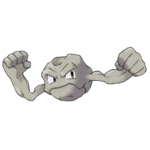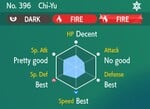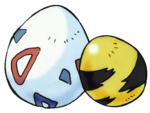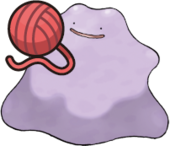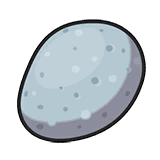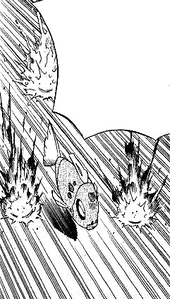The 'Shroom:Issue 200/So, You Want to Raise a Pokémon?
So, You Want to Raise a Pokémon?
Written by: Hooded Pitohui (talk)
Hello, and welcome, class, to a special supplemental tutoring session! Now, through the past year or so, we've been discussing ways you might raise and train a variety of Pokémon species, using Pokémon which I have raised myself as case studies. However, it has come to my attention that, though definitions for certain terms are provided in each class period, not everyone in attendance is familiar with the process of raising a Pokémon. Well, now, familiarizing one's self with the terms of the field and the theory behind it is all well and good, but one needs to know how to raise a Pokémon to apply that knowledge practically!
I am, frankly, shocked that this isn't being covered in your other courses, but, worry not, because we will rectify this issue now! Today, we'll go over all that information that you need to know to take a Pokémon from an egg to an effective battler in the upper echelons of its class. Now, let me note that we will be discussing the methods available to you in the Paldea Region and the Kitakami Region (that is, in Pokémon Scarlet and Pokémon Violet and their DLC). In other regions (that is, previous generations of games), the methods available to you may differ, be fewer in number, or even greater in number. We've not much time, so let's proceed straightaway!
Base it All on Base Stats
Before we can discuss what we can change about a Pokémon, we first must discuss what we cannot, under any circumstances, change, and those are Base Stats. Let me make a quick note regarding the terminology, here, to avoid confusion. When out and about in Paldea or Kitakami (that is, in-game), you will hear the term "Base Stats" being used to describe what were once called "Effort Values". Though "Base Stat" is the official term, in the academic community and the battling circuit, you will still hear Effort Values used to describe the points Pokémon accumulate in a stat by battling, and Base Stat used to describe the strengths and weaknesses inherent to an entire species of Pokémon, so we will use these terms in the same away.
Base Stats are, as aforementioned, the inherent strengths and weaknesses of a Pokémon species. These are hidden numerical values, so you will need an external reference of some sort to see them, and can range from 1-255. They do not apply to an individual member of a species, but the entire species. Take two Geodude, and they will invariably have the exact same Base Stats, with high defense and attack and low values in their other four stats. Base Stats are the biggest determiner of the final numerical values for a Pokémon's six permanent stats (HP, attack, defense, special attack, special defense, and speed). They determine the range in which those values can fall, and all other inputs determine whether they fall on the high end or low end of that range established by the Base Stats.
It's Base Stats which distinguish Pokémon species from one another. Shuckle is a defensive powerhouse, while Froslass is a speedster, and it's because of their different Base Stat distributions. Level held equal, no matter how much you do to raise a Shuckle's speed stat, the fastest possible Shuckle cannot outspeed the slowest possible Froslass. Of course, I encourage you, as always, to raise your Pokémon as you see fit, but, if you have any competitive aspirations, you will have to accept the way a given Pokémon's Base Stats fall and work with their distribution, rather than against it. Look at your Pokémon's Base Stats, determine where it excels, and raise it in a way that complements the strengths of its species. As a broad rule of thumb, a "good" Base Stat value is 80 or above, but what is "good" will depend on exactly what strategies you intend to employ and how you plan to raise your Pokémon. Make these decisions early in the process, and, from there, you can start making decisions on other inputs, such as what Individual Values your Pokémon needs or how you will distribute its Effort Values.
The Birds, the Beedrills, and the... Bottle Caps?
Once you've determined a Pokémon's Base Stats and have crafted your broad plan for raising it, the next factor to consider is another input to your Pokémon's stats: Individual Values (IVs). Unlike Base Stats, IVs are, as their name implies, specific to an individual Pokémon. Base Stats determine the overall range in which a Pokémon species' stats can fall, and IVs put a pin somewhere in that range, indicating if your particular individual Pokémon is on the high end of that range, on the low end, or somewhere in the middle. These are what determine whether or not you have a Shuckle that has great defense or outstandingly great defense, you might say. Unfortunately, the numerical values of IVs, which can range from 0-31, are hidden from you, but, unlike Base Stats, you can get a general idea of a Pokémon's IVs without consulting an external reference. In the Pokémon Storage system, you can toggle a display of a Pokémon's "potential," bringing up a vague diagram with idiosyncratic labels. These labels reveal the ranges in which a Pokémon's IVs fall, as explained by this table:
| Label | IV Range |
|---|---|
| No good | 0 |
| Decent | 1-15 |
| Pretty good | 16-25 |
| Very good | 26-29 |
| Fantastic | 30 |
| Best | 31 |
It isn't a perfect system, and if you want exact values, you will need to consult an external resource, but, the majority of the time, what you will be looking for are 31 IVs ("perfect" IVs) or 0 IVs, which this system does allow you to determine exactly.
Express Your Individual(ity) Values
How are a Pokémon's IVs actually determined, though, and can you influence them? A Pokémon encountered in the wild will have entirely randomized IVs. You won't know what its IVs are until you capture it, and you can't change these IVs. They are stuck as they are. Now, some Pokémon are guaranteed to have a certain number of perfect IVs. For instance, Legendary Pokémon will always have at least three perfect IVs, and Pokémon encountered in Tera Raid Battles will have a number of perfect IVs equivalent to the difficulty of the battle (expressed in stars) minus one (e.g., a Pokémon in a five-star battle will have four 31 IVs). Unfortunately, which IVs are perfect is... randomized. You could end up with a Miraidon with perfect IVs in HP, Speed, and Attack, while another Miraidon could have its perfect IVs in Defense, Speed, and Special Attack. Encountering Pokémon in the wild and hoping for a useful IV spread, then, is not an effective or efficient strategy, so we need to turn to a topic which will come up multiple times in this lecture: Pokémon breeding.
Breeding Basics
Let's take a brief moment to discuss breeding. When two Pokémon of opposite genders are brought together at a picnic, they may, if they are in the same Egg Group, produce an egg. Now, there are multiple factors which influence the likelihood of two Pokémon producing an egg in a given period of time, as well as some additional caveats to breeding, which are beyond the scope of today's discussion. We could spend an entire supplemental session on breeding, and we may in the future, but, for now, let's keep this as simple as possible.
If you have a Pokémon you want to breed, find a female of the species, clear your party of everything except said Pokémon and a male from the same Egg Group (consult an external resource), start a picnic, and make a sandwich which grants Egg Power. A higher-level Egg Power will result in a greater chance of finding an egg over a given time interval, but, if you want a cheap and easy option that will work well enough, I recommend stocking up on jam and strawberries and making jam sandwiches. I highly recommend that you make the sandwich; you will almost assuredly end up waiting an unreasonable amount of time for an egg without the power it grants. As a note, if you want to simplify the process at the expense of slightly lengthening the process, you can also pair a female or a male Pokémon with a Ditto.
Once you've obtained your eggs, put them in your party and walk around with them! After enough traveling, they'll hatch into a level one Pokémon, its species being the base of the evolutionary line of the female Pokémon you bred (or whatever Pokémon you bred with Ditto). This Pokémon's IVs will be... half-randomized. Three of its IVs will come from its parents, though which IVs these are and which parent they're inherited from are both randomized. Their other three IVs will be completely random. Now, this may sound like only a marginal improvement over finding Pokémon in the wild, but there are ways we can further improve the process!
Random IVs do Knot Need to be Your Destiny
By having Pokémon in a breeding pair hold particular items, you can influence parts of the breeding process, including the inheritance of IVs. There is a class of items, the Power Items, which a Pokémon can hold to guarantee it will pass down a particular IV to its offspring. Either parent can hold the item, so if, say, you really need a 31 IV in speed on a Snorunt that you plan to evolve into Froslass, and you have a Froslass with a 14 speed IV breeding with a Ditto with a 31 speed IV, you can safely have the Ditto hold the Power Anklet. There is one Power Item for each stat. These items can be helpful, and are all available for purchase at Delibird Presents in Mesagoza, Levincia, and Cascarrafa, but there's an even more useful item for IV breeding, and that's the Destiny Knot.
The Destiny Knot, which can be purchased at Delibird Presents in Mesagoza, if held by one Pokémon in a breeding pair, will cause five, rather than three, IVs to be passed down from the two parents. Unlike the Power Items, this does not guarantee any specific stat will have its IV passed down or which parent will pass down the IVs; it pulls from the IVs of both parents at random. You can combine this with a Power Item, though, by having one Pokémon hold the Destiny Knot and the other a Power Item, which will lock-in one of the five inherited IVs as always being passed down and always coming from a specific parent. Even without combining it with a Power Item, though, the Destiny Knot grants you much more control over IV inheritance. Say you're still working at breeding that Snorunt. You have your Froslass with no perfect IVs, and your Ditto with five perfect IVs (one in everything but attack). Give one of them a Destiny Knot, collect a few eggs, hatch them, and, with some luck, you'll get a Snorunt with two or three perfect IVs. Now, replace the Froslass with that Snorunt. Now, instead of pulling five IVs from a pool which is only 5/12ths perfect EVs, you're pulling from a pool which is 7/12ths or 8/12ths perfect IVs. Take a few eggs from this pair, hatch them, and, with good luck, you'll get a few Snorunt with five perfect IVs, perhaps with different distributions. Pick the one with the distribution you need, and you're ready to begin addressing other elements of raising a Pokémon!
You may not have a Ditto with five perfect IVs on hand, but, luckily, this iterative process can start from any number of perfect IVs between the two Pokémon. The fewer perfect IVs you have at the outset, though, the more likely it is that you'll have to go through a larger number of eggs, waiting for the offspring to inherit the right IVs in the right combinations. Unfortunately, randomness and probability are unavoidable, even with the Destiny Knot, but, if you're willing to spend some money and to raise your Pokémon's level (which you'll likely be doing anyways, in the long-term), there is a way to get the best possible IVs while bypassing all the randomness.
Hyped for Hyper Training
If you bring your Pokémon's level to 50 or higher and obtain a Bottle Cap (purchasable for a steep price of 20,000 at Delibird Presents in Mesagoza) or a Gold Battle Cap (purchasable, rarely, in auctions at Porto Marinada), you can seek out a man with an Abomasnow near the Montenevera Pokémon Center who will Hyper Train your Pokémon. With a regular Bottle Cap, this can give a Pokémon the equivalent of a 31 IV in a single stat (you can spend multiple caps to do this in multiple stats), while a Gold Bottle Cap will give a Pokémon the equivalent of 31 IVs in all of its stats with just a single cap. You'll notice that I keep saying "the equivalent of", and there is a reason for that. Hyper Training doesn't actually overwrite a Pokémon's IV, so while it will cause the Pokémon's stats to be recalculated as if it has a 31 IV in Hyper Trained stats, if you go to breed them, they'll still pass down their original IVs.
Whether you put the time into breeding or you put the money into Hyper Training, the work isn't quite done even once you have IVs all set. There are still two inputs to a Pokémon's stats which we need to cover, so let's move on from discussing Individual Values to discussing Effort Values.
Putting in the Effort for Effort Values
Base Stats are the strengths and weaknesses of a species. IVs are a bit like genes in that they determine the strengths and weaknesses of an individual in a species, and Effort Values (EVs) are like the experience an individual accumulates. Genes that support good aerobic capacity may help someone become a skilled swimmer, but even without such genetic luck, it's still possible for an individual to practice and build up their aerobic capacity so they can become a skilled swimmer, too, right? And of two individuals with identical genes (filtering out the effects of environment for a moment), the one who has practiced swimming will be better at it, yes? So it is with Pokémon. By battling, Pokémon can accumulate EVs and raise their stats. Base Stats and IVs conspire to determine a narrow range for your Pokémon's stats, but, with EVs at your disposal, you can determine what point in that narrow range that your Pokémon's stats will reach!
Every Pokémon has the capacity to earn a total of 510 EVs, with up to 252 EVs in a particular stat. With respect to the cap for an individual stat, the EVs can be divided up in any way, but it's fairly common to max out two stats, resulting in a distribution of 252/252/6 across three stats, with no EVs given to the remaining stats. You might also see this spread written as 252/252/4, and the reason for that is that EVs "work" in units of four. Four EVs translate to one additional point in a stat, and this means that, with 252 EVs in a stat, a Pokémon can increase in its stat by sixty-three points. As you can see, EVs make a significant difference, so let's cover how you go about obtaining them!
Getting Those Gains
The primary way a Pokémon obtains EVs is by defeating opponents in battle. Enter a battle with a Pokémon (auto-battles will not work), defeat it or catch it, and all Pokémon in your party will gain EVs, with the number of EVs they earn and which stat(s) they earn those EVs in depending on which species was defeated or captured. You will want an external guide to keep track of this (nothing in-game will tell you what EVs different Pokémon give out). You may also want some pen and paper, because you'll need to manually keep track of what EVs your Pokémon have earned! You can toggle a graph on their summary screen which displays their EVs, but it only gives a vague idea of how many EVs they have. A specific stat will sparkle if its EVs are maxed out, and the whole graph will be cyan if the Pokémon has 510 EVs total, but, otherwise, it tells you next to nothing.
Now, if you're thinking "this process sounds slow and tedious", you're correct, but I do have a few tips to speed it up. First, look for mass outbreaks of wild Pokémon. Around Paldea and Kitakami, each day, a small number of Pokémon species will appear in large swarms in certain areas. What species have a mass outbreak each day and where these mass outbreaks occur are up to chance. Up to somewhere around 100-120 Pokémon in total will appear in this swarm, so, find a mass outbreak of a Pokémon that provides the EVs you need, take the Pokémon you're raising, and go forth to battle! Unless you're lucky enough to have a mass outbreak of a Pokémon that gives out 3 EVs in a stat, though, even battling every Pokémon in the outbreak won't allow you to max out a stat, which is why, to speed the process up, we will again be turning to the Power Items.
When a Pokémon holds a Power Item, it gains an additional 8 EVs for every Pokémon defeated or captured while it's in the party. Which stat gets the 8 EVs depends on which stat the Power Item corresponds to. As an example, say we take our Snorunt we've been raising and give it a Power Anklet. We take it to a mass outbreak of Diglett, which normally provide 1 speed EV per Diglett. With the Power Anklet providing 8 speed EVs per battle, Snorunt ends up gaining 9 speed EVs per battle, allowing us to max out its speed stat's EVs in just 28 battles! Using the Power Items makes raising a Pokémon's EVs a much faster process, and I highly recommend using them. Even still, though, if you aren't lucky enough to get a mass outbreak of a species which provides the EVs you need, you'll have to hunt around for the right Pokémon to defeat, which is still fairly tedious. Once again, we seem to find ourselves at the mercy of luck and chance, but, once again, this is a problem which money can overcome!
A Spoonful of Vitamins Helps the EV Training Go Down
There are items which can raise a Pokémon's EVs, sparing you the time and effort of finding and battling large numbers of wild Pokémon. Feathers cannot be purchased, but can be found scattered around Casseroya Lake in Paldea and the Crystal Pool in Kitakami, and, with the exception of the Pretty Feather, will grant a Pokémon a single EV increase in the stat corresponding to the feather. It can be tedious to collect these in large numbers, but having a small stockpile can be useful. I find them particularly helpful for adding the final 4 or 6 EVs to a third stat after maxing out two, and they can be useful in adding the final few EVs to a stat that you don't want to max out, as well.
More important than Feathers, however, are Vitamins. These items can be bought at Chansey Supply (there is a branch in Montenevera) for a steep price of 10,000. They're costly, but they're quite useful for raising a Pokémon's EVs quickly while cutting out searching for wild Pokémon or waiting for the right mass outbreak, as they grant a Pokémon 10 EVs in the stat to which they correspond. You can use them without limit, too, so, you could, say, use twenty-five Proteins to give a Pokémon 250 attack EVs and then two Muscle Feathers to max out the stat.
If you're worried about emptying your wallet, you might consider taking an Amulet Coin and completing the Academy Ace Tournament, fighting in Tera Raid Battles to acquire valuable items you can sell, or scouring the Asado Desert for items to sell. My preferred method, though, is to gradually accumulate LP by simply visiting the various Tera crystals which pop up around Kitakami and Paldea each day. You won't accumulate LP quickly, but repeat it over a few days, and you'll get a decent haul without having to put much effort in.
As an alternative to the Vitamins, you can also use Mochi from Kitakami, obtained by completing the Ogre Oustin' game offered near Kitakami Hall. This does require a little more effort, but it's easier on the wallet, and these items are equivalent to the Vitamins. Any given Mochi type will add 10 EVs to its corresponding stat, with no restrictions on their use. In addition, there's a type of Mochi without a Vitamin equivalent, the Fresh-Start Mochi, which fills an important niche. Should you make a mistake while EV training your Pokémon, you can use one Fresh-Start Mochi to bring one Pokémon's EVs all back down to zero! These are all useful tools which can take some of the random chance factor out of raising a Pokémon's EVs, but they do come with their own costs in time spent acquiring them or grinding for cash.
A Principle of Nature
Those of you who don't care for keeping track of numbers may now rejoice, as we've covered all of the inputs to a Pokémon's stats which would require you to do so! There is, however, one more factor which influences a Pokémon's stats, and that is their Nature. On a Pokémon's summary screen, you may notice that different individual Pokémon are described as "Jolly" or as "Lax" or as "Quirky". You might also notice that many, though not all, Pokémon have one stat highlighted showing a downwards-pointing blue arrow on their summary screen, and one stat showing an upwards-pointing red arrow. There is a link between this highlighting and these personality descriptions. These descriptive words refer to a Pokémon's Nature, and each Nature provides a 10% boost to one stat other than HP (displayed in red) and a 10% reduction to one stat other than HP (displayed in blue). Five of the possible twenty-five Natures raise and lower the same stat, cancelling out and having no effect (and thus, leaving the Pokémon with no stats in red or blue). This is easier to see through the table below:
| Raised Stat | Lowered Stat | |||||
|---|---|---|---|---|---|---|
| Attack | Defense | Sp. Atk. | Sp. Def. | Speed | ||
| Attack | Hardy | Bold | Modest | Calm | Timid | |
| Defense | Lonely | Docile | Mildv | Gentle | Hasty | |
| Sp. Atk. | Adamant | Impish | Bashful | Careful | Jolly | |
| Sp. Def. | Naughty | Lax | Rash | Quirky | Naive | |
| Speed | Brave | Relaxed | Quiet | Sassy | Serious | |
It's a simple enough concept, but how can you actually get a Pokémon with the Nature you want? While you might hear reports from other regions that you can increase the odds of finding wild Pokémon with a particular Nature by using the ability Synchronize, in Paldea and Kitakami, this isn't the case, so we're left with two options. The first of those options? Our good pal, breeding. You see, if you have a Pokémon in a breeding pair hold an Everstone, all of its offspring will have the same Nature that it does. This is probably the easiest part of the breeding process. Find a compatible Pokémon in the same Egg Group (or a Ditto) that has the Nature you want, give it an Everstone, breed it with the Pokémon you need to breed, and now you have the Pokémon you want with the Nature you want. As you iterate for IVs, you keep passing the Everstone from parent to child and keep that Nature locked in the family line. All the while, this frees up the other member of the breeding pair to hold a Destiny Knot, so this works out well. You can find Everstones out in the field, or you can pick them up for a reasonable 3,000 at a Delibird Presents store.
As always, though, there is an alternative to breeding, if you're willing to spend some money. Mints are items which functionally overwrite the stat modifiers of a Pokémon's Nature. You'll note again my strange wording there. I have to employ that wording because, like with Hyper Training, Mints don't actually change a Pokémon's Nature. Their Nature remains the same once you use the Mint, but which stat gets boosted and which gets lowered changes as if you changed the Pokémon's Nature. There are twenty-one Mints in total, all of them corresponding to a particular Nature. There are no Mints corresponding to the Quirky, Bashful, Docile, or Hardy Natures, as these would all have the same effect as the Serious Mint. Mints can rarely be found out in the field, but, to accumulate them in any appreciable quantity, you'll need to visit a Chansey Supply store and buy them for 20,000 apiece.
Your Ability to Obtain the Ability You Want
Now, celebrate, because with EVs, IVs, and Natures mastered, you have all the knowledge you need to shape your Pokémon's stats! Alright, now, put the celebrations on pause, because there are a few other points which we need to discuss, one of those points being Abilities. Every species of Pokémon has up to three potential Abilities, or special powers that activate automatically under certain conditions. These Abilities range from the harmful-to-the-Pokémon-which-possesses-them, such as Truant and Defeatist, to the extremely useful, such as Water Absorb, so it's important to get the proper Ability on your Pokémon. The right ability can make or break your strategies.
Slotting in Knowledge on Ability Slots
Now, while every Pokémon species has up to three potential Abilities, some do only have two, or even just one Ability. You can think of every species having three Ability "slots", these three slots made up of two "normal" slots, and one "hidden" slot. These distinctions between the slots actually do make a mechanical difference. So-called "Hidden Abilities" work under different rules than regular Abilities, and that's going to become important in a moment. For now, though, know this much. In the wild, a Pokémon will have a randomly-selected ability from one of its two "normal" slots.
Let's go over a few ways those Ability slots can work, working from the more complicated situations to more straightforward ones. Let's look at Feebas. Suppose you encounter a wild Feebas. Feebas can have one of two normal Abilities, either Swift Swim in its first slot, or Oblivious in its second slot. The wild Feebas will have one of these two abilities at random. Once you know which Ability it has, though, things get a little more predictable. Evolving a Feebas with Swift Swim will net you a Milotic with Marvel Scale, because this is the Ability in Milotic's first Ability slot. Meanwhile, a Feebas with Oblivious will evolve into a Milotic with its second normal ability, Competitive. A Swift Swim Feebas will never evolve into a Competitive Milotic. Ability slots are always retained, so, though which Ability you'll end up with on a wild Pokémon is random, once you know which of its possible Ability slots a Pokémon has, you'll know what Ability its evolution will have, even if the Ability is different.
Here's another odd example. Suppose you encounter a wild Snorunt; it's either going to have Inner Focus or Ice Body. If you go to evolve that Snorunt into a Froslass, though, that Froslass will have Cursed Body as its Ability, regardless of what Snorunt had, because both of its normal Ability slots are taken up by Cursed Body. Ability slots are always preserved, but, in this case, two Ability slots share the same Ability. If you're a bit confused at this point, don't worry; many Pokémon are more straightforward. Aron will, in the wild, have either Sturdy (in their first slot) or Rock Head (in their second slot). When they evolve into Lairon, the Ability slot is retained, so Lairon will have Sturdy if Aron had Sturdy, and it will have Rock Head if Aron had Rock Head. Remember that the Ability slot is always preserved, and, over time, everything else will fall into place.
This rule holds true even for Hidden Abilities. If your Pokémon has its Hidden Ability, its evolution will also have whatever Ability is in its hidden slot. There are a few strange edge-cases with this, too, but don't panic if your Pokémon seems to lose its Hidden Ability upon evolution, as happens with a Caterpie with Run Away, which evolves into a Metapod with Shed Skin, which is also its sole normal ability. The Ability slot is always preserved, and, if the Pokémon can evolve a second time, there's a good chance it will return to clearly having its Hidden Ability. Take that Metapod and evolve it, and you'll get a Butterfree with Compoud Eyes! Again, I cannot reiterate enough that the Ability slot is always preserved.
Acquiring Abilities
So far, we know that we can encounter Pokémon in the wild and they'll randomly have one of their normal Abilities, but questions linger. Can we remove the obstacle that is randomness, and how do we get Hidden Abilities? To tackle the latter question first, in Paldea and Kitakami, you'll want to catch Pokémon in Tera Raid Battles if you want to get their Hidden Abilities. It isn't guaranteed that a Pokémon hiding in a Tera crystal will have a Hidden Ability, but there's a decent chance it will.
To take a little more control over which Abilities our Pokémon have, though, we turn, once again, to breeding. Take a female Pokémon in a breeding pair (or, if the pairing involves a Ditto, any Pokémon capable of producing eggs), and there is an 80% chance its offspring will inherit its Ability slot. Breed a Milotic with Competitive with a Ditto? The resulting Feebas will have an 80% chance of having Oblivious. Hidden Abilities are passed down in the exact same way, but the chance of passing down the Hidden Ability slot is only 60%. If you're looking to save money, you can breed for Abilities fairly reliably, but, even through breeding, random chance plagues us.
Luckily, wealth can save us time once again. Ability Capsules, available at Chansey Supply for a whopping 100,000 (alternatively found at random by completing high-difficulty Tera Raid Battles), allow you to switch which of a Pokémon's normal Ability slots that the Pokémon has. As an example, you can use an Ability Capsule on a Feebas with Oblivious to give it Swift Swim, or on a Snorunt with Ice Body to give it Inner Focus. Unlike Hyper Training and Mints, this actually changes the Pokémon's Ability slot, so, since Ability slots are always preserved in evolution or breeding, the Feebas you've given Swift Swim via an Ability Capsule will evolve into a Marvel Scale Milotic. Ability Capsules cannot, however, switch a Pokémon's normal Ability slot for its hidden Ability slot or vice versa.
For that, you'll need an Ability Patch, a rare item which... well, here, even wealth can't assist us. These can only be found by completing high-difficulty Tera Raid Battles. When used on a Pokémon with one of its normal Abilities, it will switch the Pokémon from having one of its normal Ability slots to having its hidden slot. In other words, it overwrites the Pokémon's Ability with its Hidden Ability. If the Pokémon already has its Hidden Ability, using this item will change its hidden slot to its first normal slot, or, in other words, will replace its Hidden Ability with its first-slot normal Ability. Like the Ability Capsule, the Ability Patch genuinely changes a Pokémon's Ability.
PokémonWare: Move It!
Your Pokémon now has the stats it needs to battle effectively. It even has the Ability it needs to support your strategies. There is, however, one more matter to address. Your Pokémon needs moves, the techniques it will actually use in battle according to your commands! Now, which moves your Pokémon need is a topic we could spend multiple sessions on, as you'll know if you've been attending our scheduled class sessions, so we aren't going to address that today. All we'll discuss today are the ways your Pokémon can actually acquire moves.
By Battle, Machine, Breeding, or Picnics
The primary method through which Pokémon learn moves is leveling up. Battle opponents or use Experience Candies or Rare Candy to cause your Pokémon to gain experience points, and they'll level up. When their levels reach a certain number, they'll have the chance to learn specific moves, with what moves they learn and what levels they learn them at varying by species. Some Pokémon will also attempt to learn a move after evolving. We won't cover all the methods which trigger evolution in this session, but suffice to say that the vast majority of Pokémon evolve upon reaching a certain level.
Pokémon can also learn moves through the use of Technical Machines, or TMs. Every TM contains a specific move, and can be used a single time to teach this move to compatible Pokémon (which Pokémon are compatible with which moves varies from species to species). TMs can be obtained by scouring Paldea and Kitakami and picking them up off the ground, can be won in certain challenges, or can be crafted at the TM Machine at every Pokémon Center. Using League Points (obtained by, for example, interacting with Tera crystals) and Pokémon materials (obtained by defeating wild Pokémon), you can make your own TMs, with the number of copies you can make limited only by the LP and materials you have.
Finally, Pokémon can also learn what are called "Egg Moves", moves which a Pokémon may not typically be able to learn but which it can inherit from a parent. If a Pokémon in a breeding pair knows a move that its offspring can use, it will pass down the move to its offspring. This can be true for moves that the offspring can learn via leveling up or TM, such as a Snorunt hatching with Ice Beam if a Froslass taught Ice Beam via TM breeds with a Ditto. It can also be true for certain moves which the offspring couldn't otherwise learn. For example, Snorunt normally cannot learn Disable, but Wigglytuff, which shares an Egg Group with Froslass, can. Take a Froslass and pair it with a male Wigglytuff that knows Disable, and the resulting Snorunt can hatch knowing Disable, as well.
Could you ever get Disable on a Snorunt caught in the wild, rather than hatched from an egg? In Paldea and Kitakami, the answer is an emphatic "yes"! Purchase a Mirror Herb at Delibird Presents for 30,000, and then give it to your Wigglytuff with Disable. Have that Wigglytuff go on a picnic with your Snorunt, and your Snorunt will acquire Disable from Wigglytuff. To generalize this example, a Pokémon holding a Mirror Herb can pass along moves to another Pokémon on a picnic if the receiving Pokémon could normally learn the move as an Egg Move.
As one final note, any Pokémon which forgets a move it has previously learned via level up or TM can re-learn it at any time. Simply open its summary screen and select "remember moves". Through this same method, you can also have a Pokémon learn moves which it declined to learn while leveling up. You cannot, however, use this method to re-learn Egg Moves, unless they were learned via the Mirror Herb method, so be cautious!
Congratulations! You Can Raise a Pokémon!
With that, we bring our discussion to a close. You now have all of the basic knowledge needed to take a Pokémon and raise it to its full potential. Knowing how Base Stats, IVs, EVs, and Natures work, as well as how to acquire the Abilities and moves you want, you can begin crafting plans, looking at particular Pokémon and deciding how to best equip them for battle. Should you be looking for ideas on what EV and IV distributions you should aim for with a specific Pokémon and what moves you should equip it with, you could attend our regular class sessions... Ah, but, that's a thought for another time. Perhaps we'll have another of these supplementary sessions again in the future, but, for now, well, go on and raise Pokémon as you see fit!
